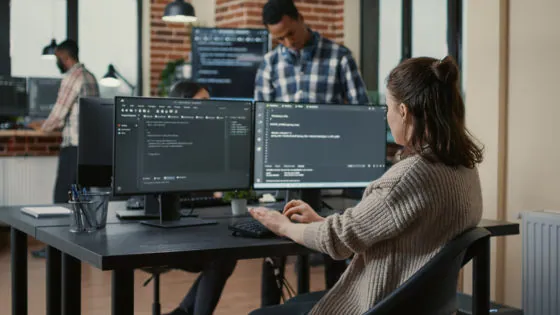What is localization engineering?

Contrary to popular opinion, you can’t simply forward files to a translation agency and “presto” the file comes back translated word-for-word. Most files–including Microsoft Word–contain non-translatable, or difficult-to-translate, content.
That’s where localization engineering comes in.
Localization engineering is, quite simply, the professional preparation of files for translation. This means that every file you want translated (at least, efficiently and correctly) requires localization engineering by a trained, localization engineer to ensure that all of your content is pulled into the translation management system correctly.
Without the proper file engineering, your translation partner may not be able to process your files.
Yes, even a Microsoft Word file may require localization engineering
Let’s say you want to translate a Word document. Now, why can’t a translation expert receive the Word doc and start translating instantly? Well, what if the Word document contained images? Or unique characters?
And if you have an Excel file, what happens to the formulas or calculations or images found in those types of files? Trouble could be lurking.
Same with PowerPoint. Lots of images. Lots of source documents that need a trained eye to pore through every word and character to make sure the translation is a true 1-to-1 translation.
Programming files can be a topic unto themselves, just know that sometimes these kinds of files cannot be translated in their current format and need to be converted into a translation standard file type such as XLIFF (XML Localization Interchange File Format). But let’s not go down that rabbit hole quite yet.
Just know that the more structured the source content, the less engineering will be required. (XML-based formats are ideal.)
It’s starts with a proven process
Process is everything in localization engineering. Everything.
If you ask a translation expert what their localization process is, and they don’t have one, run for the hills. Here’s what a proper process should look like:
- Non-translatable content (images, code strings, etc) is extracted from your files by the engineers.
- The engineering team reviews all source files and recommends a solution to prepare and analyze them. This includes looking for language-specific differences among the content and notify the translation experts.
- If needed, the localization engineers create custom parsers to access and display the translatable content correctly within the translation memory tool.
- Localization engineers confirm that all file structures and directories are intact prior to delivery to translation experts.
- Translation experts translate the files and deliver content back to you (the client).
If that sounds complicated, don’t worry, the process actually creates a consistent, smooth translation for every project. Plus, good news, the localization engineering process only has to be set up one time per client…unless that client plans to send new file types in the future.
The path to translation success & efficiency
Even with the best technologies and translation memory tools, the most successful, efficient projects require the deft hands of professional localization engineers. Handing projects directly to translation experts can solve your translation needs, however, if you want flawless translations created for tight timelines, you need experienced localization engineers who are ready to tackle most any file type.
Contact our team today to see how you can achieve consistent, effective and cost-efficient translations.
Insights for global growth






Power your strategic growth
Go beyond tactical localization with tailored, strategic solutions that resonate locally and drive growth globally.
Get started